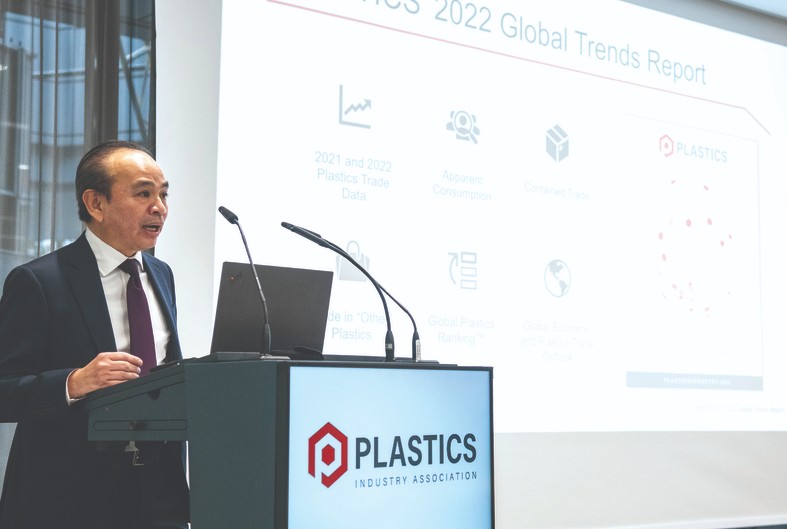Market trends
Smart manufacturing gathering pace in China
작성자 : Aeyoung Park
2018-03-13 |
조회 : 4318
Smart manufacturing gathering pace in China
As next-generation information technology has gained pace in its penetration into the manufacturing sector, modern industry is knocking on the door of smart manufacturing. To seize this opportunity, Chinese enterprises of various fields have speeded up integration and innovation, promoting major changes in such aspects as manufacturing management methods and business models. As a result, a series of new models and new forms of businesses have emerged.
Top level design of Made in China 2025 initiative completed
China’s philosophy in manufacturing and informationization has been gradually advancing over the years from the 10th Five-Year plan period (2001-2005) through to the 13th Five-year Plan period (2016-2020).
According to Ma Zhongyu, Deputy Director of the State Information Center (SIC) of China, China’s intelligent manufacturing industry has a huge potential, with its output value expected to exceed RMB 3 trillion by 2020, growing at a compound annual growth rate (CAGR) of approximately 20%.
Made in China 2025 is the central government’s first 10-year action plan to turn the country into a manufacturing giant. Formally issued in 2015 by the State Council, it plays a significant role in stabilizing China’s industrial growth and accelerates the transformation and upgrading of its manufacturing industry.
Luo Wen, Director of the Planning Department of China’s Ministry of Industry and Information Technology (MIIT), said that the initiative’s top level design has largely been completed, and a rise can be seen in building up innovation and basic capacities of the manufacturing industry.
“In the future, it is necessary to continue to keep the focus on intelligent manufacturing on one hand; on the other hand, priorities have to be put on developing next-generation information technology and new material industries, in order to enhance the strength of China’s core basic industries,” he said.
So far, China has begun 226 projects to run comprehensive, standardized tests on intelligent manufacturing technologies and apply new manufacturing models. In addition, 109 pilot demonstration projects in intelligent manufacturing have been selected and a total of 47 directions and 61 projects to strengthen the foundations of industry have been arranged.
On August 15, MIIT released the 2017 list of “Sino-German Intelligent Manufacturing Pilot Demonstration Projects”. Involving 17 projects covering four aspects: industrial cooperation, cooperation on standardization, establishment of demonstration parks, and cultivation of talents, the list gives another boost to the in-depth development of cooperation between China and Germany on intelligent manufacturing. Germany is where Industry 4.0 originates; therefore, it is significant to strategically align MIC 2025 with Germany’s Industry 4.0.
From robots to networked, smart manufacturing
Industry 4.0, or smart manufacturing is influencing China’s manufacturing industry. In a recent interview with CPRJ China Plastic & Rubber Journal, Zeng Yubo, Secretary General of International Smart Manufacturing Industry Alliance (ISMIA), told us that in the past few years, he was most impressed by the gradual change of people’s perception of Industry 4.0 or smart manufacturing, from craving for robots initially, to pursuing network- and intelligence-based manufacturing.
Currently, the manufacturing sector is actively investing not only in advanced equipment but also in upgrading with automation technology. It also shows a higher degree of acceptance towards Management Execution System (MES).
Secondly, thanks to China’s well-developed internet, innovations in business model brought by internet are driving innovation in manufacturing technology. For instance, the popularity of the bike sharing model has given birth to airless tires, and the Internet of Things (IoT) has enabled enterprises to strengthen their industry chain management.
“In this revolution, robots are no more than the most fundamental step, and supply chain management and product lifecycle management are the real focus and challenges for Industry 4.0,” said Zeng.
Leading household products producers plan for intelligent manufacturing
China’s leading plastic consumer goods company Beijing Citylong opened a new, highly intelligent factory in Tianjin in June 2016. According to insiders, more than 100 injection molding machines from Haitian and Engel, and Piovan automatic feeding system from Italy are installed. Moreover, it is also a pioneer in the use of “discrete manufacturing intelligent factory system” and intelligent 3D warehouse.
According to Citylong President Pan Shibing, the intelligent 3D warehouse offers five times as much space as general 3D warehouses, and reduces management and logistics staff by 90%. Leveraging intelligent stock matching and retrieval functions, it improves internal warehousing logistics efficiency by over 70%. Its intelligent order distribution function with custom logics contributes to the realization of inventory safety, quality tracking and the best dispatching of goods.
And the introduction of Warehouse Management System (WMS) for intelligent 3D warehouses is revolutionizing the informationization of factory warehouses by providing enormous support to a sales network across the country.
In addition to Citylong, leading furniture enterprises such as Guangdong Haixing Plastic & Rubber Co. Ltd. and Chahua Modern Housewares Co. Ltd. are also promoting the application of automatic and intelligent technology.
Panjin Haixing Technology Co. Ltd. is an investment project of Guangdong Haixing in Liaoning province. With the use of a kind of 3D production line with joint stacking robots and digital warehousing systems, the company has improved its production efficiency by 2.5 times while reducing its warehouse and logistics staff by 60%, according to Li Gangmin, an expert from the Committee of Plastic Household Products of the China Plastics Processing Industry Association (CPPIA) who took part in the project.
“Basically, household products manufacturers that use injection molding as their core production means, have included automation technology in their new projects in recent years,” remarked Liang Jiajie, Secretary General of the Committee of Plastic Household Products of the CPPIA.
He further said, “In the aspect of informationization, enterprises are actively introducing more digital management platforms, such as CRM (Customer Relationship Management), MES, and WMS systems, based on their ERP (Enterprise Resource Planning) implementation. Moreover, more enterprises also begin to establish their own information engineering departments and recruit professionals in the intelligent manufacturing field.”
Wahaha achieves automation from materials to finished products
Wahaha is one of the leaders in automated production in China.
As an enterprise chosen to be a “Retrofit Pilot for Food and Beverage Manufacturing Process Intelligence”, Hangzhou Wahaha Group is actively promoting relevant projects.
Talking to CPRJ in an exclusive interview, Yang Lin, Director of Wahaha’s Equipment Department, said, “For our production systems, Wahaha adopts an engineering design that connects up the preform and cap manufacturing systems and the filling and packaging systems. This reduces the number of intermediate processes and hence further improves the production efficiency.”
Wahaha is a leader in automated production and has accomplished complete automation of the entire process, from raw materials to finished products, at the production lines of almost all of its factories. In fact, as a flow manufacturing industry, food and beverage manufacturing has a better foundation in mechanization and automation when compared with other industries.
Meanwhile, Wahaha is also engaged in the application of highly integrated information technology. Transversely speaking, Wahaha has established a comprehensive enterprise information management system that is built with SAP as the core and leverages the Internet and big data technologies in combination with such analytic tools as business intelligence to analyze its business lines of production, supply and marketing.
Vertically speaking, Wahaha has preliminarily completed the architecture of the middle level, i.e. MES. The system that captures fundamental data from plant floor sensors, equipment and production lines has also been put into implementation. As for the future, the group strives to achieve comprehensive integration of information starting from sensors to the ERP system.
Gree turns to intelligent equipment manufacturing
Gree has stepped into the production intelligent equipment.
Gree Electric Appliances has been insisting on independently develop and grasp core technology in order to lead China to leapfrog from “Made in China” to “Created in China” and “Intelligently Made in China”.
In recent years, Gree has been gradually moving forward to technology-related diversification and therefore it is crucial for the company to be able to take the lead in the area of intelligent equipment.
As early as in 2012, Gree established technical units including an office of automation, department of automation equipment manufacturing, and R&D centers for automation technology and intelligent equipment, with focus locked on two areas: intelligent equipment and precision dies and molds.
Following five years of development, Gree accomplished the automation of its internal production lines and improved its overall production efficiency by 10.5% through the use of intelligent equipment independently developed and built by the company.
Meanwhile, Gree has also realized the integrated application of customized industrial robots, and large automated production line solutions, which are both oriented towards the market. The company’s offering of intelligent equipment products covers more than 100 specifications of products in 10+ areas, including CNC machining centers, industrial robots, servo robots, intelligent warehouse equipment, and intelligent inspection equipment.
Gree has also accomplished the independent development and production of four critical components of industrial robots, namely controllers, actuators, servo motors and reducers. By implementing China’s national development strategy through corporate transformation and upgrading, Gree is injecting fresh blood into this revolution.
“Made in China” has been changing over time, from copying to creating, and from learning the forms to innovating the essence. Following the further optimization of the policy for intelligent manufacturing, the continuous breakthrough in critical common technology and core equipment, the gradual improvement in intelligent manufacturing standards, and the integration of new-generation Information and Communications Technology (ICT) with production processes, management process, equipment, and products, “Made in China” will move faster in its transformation and upgrading to “Intelligently Made in China”.
Source: China Plastic & Rubber Journal




















